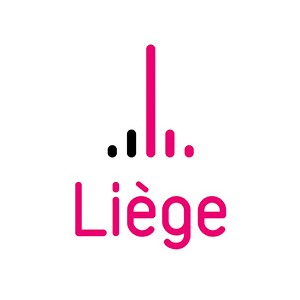History of the park and museum
LA BOVERIE: at the heart of urban development in Liège
Liège was the capital of a sovereign state, the principality of Liège, for eight-hundred years (985-1789). This State occupied a quarter of present-day Belgium and extended to the French, Dutch and German borders. A city at a crossroads, at the intersection of the Germanic and Latin worlds, Liège then took up a leading position in the Industrial Revolution, which enabled it to develop cultural tools and major works of art. Today, Liège remains the economic capital of Wallonia. As a centre for logistics and culture, a place for events, research and exchanges, since 2000, Liège has been implementing a genuine strategy of consolidation and redeployment.
Culture and international accessibility as a driving force for development
The set of new facilities in Liège is the result of a cross-sector strategic plan combining priority actions and large urban projects based around culture and mobility in particular. This strategy aims to make Liège a truly creative and connected city which is open to the world.
LA BOVERIE: a site at the heart of the Guillemins-Médiacité axis, designed by the greatest architects
Running from the HSR station designed by Santiago Calatrava up to the Mediacité, a shopping and audio-visual centre designed by Ron Arad, a new urban axis is in the process of changing the image of Liège: The Guillemins-LA BOVERIE-Mediacité axis. It runs down two banks of the River Meuse and the La BOVERIE island and are connected by a 1,250-meter walk-way/cycling track. It can be accessed in a few minutes from the train station and its new esplanade, flanked by the majestic new “Paradise” tower, Design Centre and the new quays of the Meuse. This walkway/cycling track feels like a veritable invitation to go onto the island and its beautiful park, a bucolic place long appreciated by families living in Liège with, at its heart, a one hundred year old venue for art and exhibitions: LA BOVERIE, redesigned by the architect Rudi Ricciotti (MUCEM of Marseille, cf. infra) alongside architecture firm PhD. Médiacité, the Olympic ice rink and Média Rives, the RTBF (Belgium’s French-speaking public broadcaster) studios are within a stone’s throw of this enchanting site.
Orchestra, opera, theatres, cinemas, museums, atypical places and emerging scenes: booming creativity
Liège is undoubtedly a city of culture, boasting an opera, the recently-renovated Royal Opera of Wallonia, an orchestra, the internationally renowned Royal Philharmonic Orchestra of Liège, and the Theatre of Liège, which has recently taken up residence in its new setting, to much acclaim from critics. The Liège scene also has a wealth of talented emerging creative people in many disciplines. Among the cultural hotspots are the Curtius Museum (History of Liège, Glass, Weapons, Arts of the Middle Ages etc. ), the “City Mirror” (focusing on citizenship, collective memory and the dialogue between cultures) or the Sauvenière cinemas , dedicated especially to the arthouse cinema.
The city of Liège has fully embraced the 21st century by implementing a genuine development strategy based in particular on international accessibility and culture, supported by major architectural projects. Liège has integrated, in this sense, the prospect of 75% of the world's population living in a city in 2050, which represents a real challenge for European cities. The culmination of this refurbishment plan is the return of the tram to Liège, with a track that will run across the city from north to south. With the HSR station, the installation of park and ride facilities and miles of new cycling tracks and walkways, mobility in the city centre will be both effective and sustainable.
Contact : aW5mb0BsYWJvdmVyaWUuY29t



